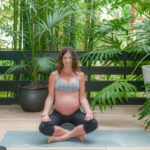Paleo Cooking Sous Vide Style: Is It Safe?
Recently, a blog reader wrote in to ask my opinion on implementing sous vide cooking to prepare Paleo style food. Sous vide is a method of cooking food sealed in airtight plastic bags in a water bath or in a temperature-controlled steam environment for longer than normal cooking times. The intention is to cook the item evenly at low temperatures, typically around 55 °C (131 °F) to 60 °C (140 °F) for meats and higher for vegetables. The end result is an inside that is properly cooked without an overdone outside with an overall moist product. But what about the plastic? Not so Paleo, right? I ‘checked in’ with an expert, Nathan Myhrvold, author of Modernist Cuisine: The Art and Science of Cooking by referring to his site and what do you know? He had a piece on just this topic! Here’s what he had to say from a ‘molecular gastronomy’ perspective: “According to the latest research, the safest plastics for use with food are high-density polyethylene, low-density polyethylene, and polypropylene. Virtually all sous vide bags are made from these plastics, as are most brand-name food storage bags and plastic wraps such as Saran wrap. Polyethylene is widely used in containers for biology and chemistry labs, and it has been studied extensively. It is safe. Less expensive, bulk plastic wraps sold to the catering trade are not as safe, however. These products are commonly made from polyvinyl chloride (PVC), which can contain harmful plasticizers that have been shown to leach into fatty foods such as cheese, meat, and fish. Many professional kitchens use clear, rigid, plastic storage containers that are made from polycarbonate. While they are currently approved for food use, these plastics also may be a cause for concern because they contain bisphenol A (BPA), a chemical that can disrupt hormone activity and leach into foods and beverages The bottom line is that bags made expressly for cooking sous vide are perfectly safeas are oven bags, popular brands of zip-top bags, and stretchy plastics such as Saran wrap. If you remain hesitant to try cooking sous vide due to concerns over plastic, you can always use canning jars instead, but beware that cooking times will be longer.” So does that really mean there is any such thing as a plastic that is truly safe? I’d personally stick with the statement in the last paragraph and stick with using glass canning jars instead. I’d rather have a slightly longer cook time than risk any plastic leaching into my food. There are enough other ways that we get exposed to chemicals that we cannot control (say, for example what we breathe!), that it makes sense to me to err on the side of caution and not add to the exposure any time we have an alternative. Check the article, Is It Safe to Cook With Plastic to read the full piece.





